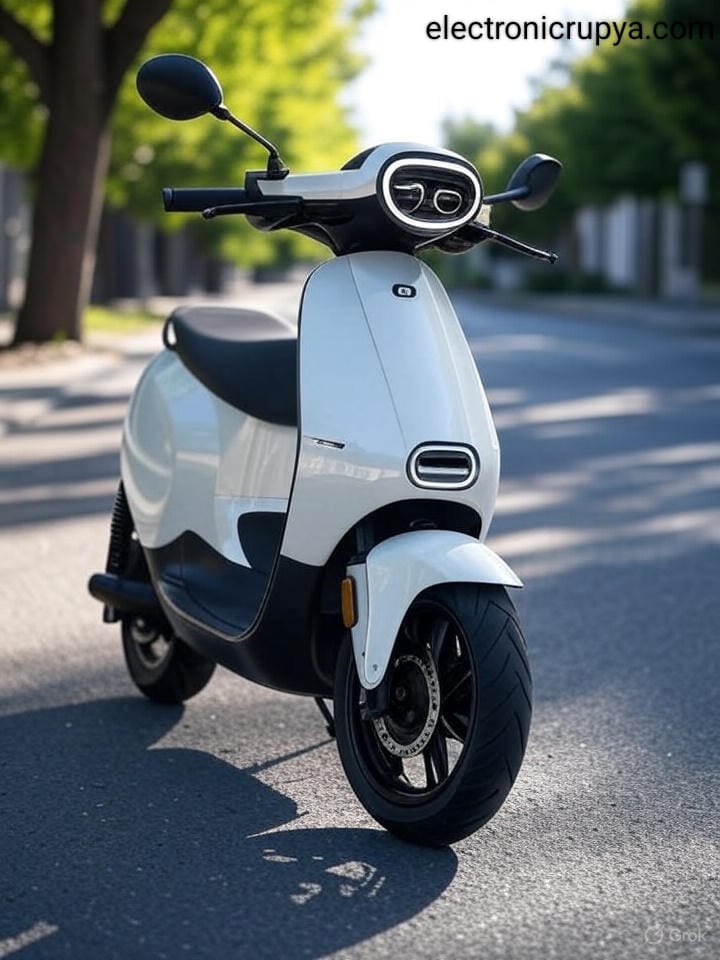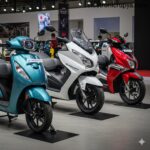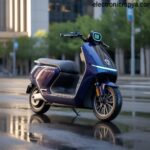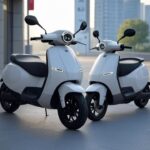INTRODUCTION
Electric vehicles have quickly gone from being a futuristic dream to a practical reality on Indian roads. A few years ago, hardly anyone thought seriously about switching from petrol and diesel vehicles to electric ones. But today, thanks to rising fuel prices, pollution concerns, and advancements in technology, more and more people are considering EVs as their next vehicle. What’s even more exciting is how Indian companies, from long-standing giants like Tata to new players like Ola, are leading this change. They are not just producing EVs — they are redefining what transportation can look like in a modern, eco-friendly India.
BENEFITS
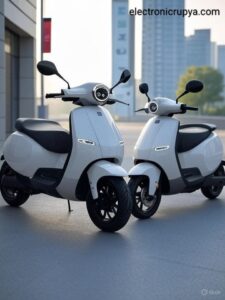
For a lot of us young people, buying a vehicle isn’t just about going from point A to point B anymore. It’s about being responsible, making smart financial decisions, and, of course, choosing something that looks cool and feels advanced. That’s why Electric vehicles are catching on so fast. They’re clean, they’re cheaper to run, and they’re loaded with the kind of features that make driving fun again. It’s especially interesting to see how Indian companies have stepped up to make EVs that aren’t just practical but are also stylish, tech-savvy, and surprisingly affordable.
Tata Motors, for example, has really become a leader in this space. The Tata Nexon EV is probably one of the most popular electric cars in India right now. It looks like a regular compact SUV, but it runs on electricity and offers a solid driving range that works well for both city use and long trips. It’s become a top choice for families and young professionals alike. Even more impressive is Tata’s Tiago EV, which is one of the most affordable electric cars in the country. By offering EVs at different price points, Tata has made it easier for regular people to consider going electric, not just those who can afford a luxury car.
At the same time, Ola, a brand most of us knew mainly for ride-sharing, has made a huge impact with its electric scooters. When the Ola S1 and S1 Pro scooters were launched, they created a massive buzz, especially among college students and office commuters. These scooters aren’t just battery-powered — they come with smart features like touchscreen dashboards, app controls, and fast charging. They’re lightweight, fun to ride, and come in cool colors, which adds to their appeal. What really makes Ola stand out is that it’s not just selling EVs, it’s trying to build an entire ecosystem around them, including hyper charging stations across the country.
VARIANCES IN EV
Other companies have joined the race too, adding more variety and pushing the electric vehicle market forward. MG Motors, for example, brought in the ZS EV, a stylish and premium SUV that’s great for people who want a little more comfort and performance. Ather Energy, an Indian start-up, has created the 450X electric scooter that’s known for its speed, modern design, and smart features. Although it’s a bit on the expensive side, it offers a smooth and powerful ride that appeals to tech-lovers and urban riders.
What’s driving this sudden rush toward EVs is not just cool design or high-tech features.
A big reason is the reality of pollution and climate change. Cities like Delhi, Mumbai, and Bengaluru often have dangerously high air pollution levels, and a large part of it comes from vehicle emissions. EVs, which produce zero tailpipe emissions, offer a cleaner, greener alternative. Switching to EVs may not fix everything overnight, but it’s definitely a major step toward cleaner air and healthier cities.
WHY EV?
Another strong reason people are thinking about Electric vehicle is the rising cost of petrol and diesel. Fuel prices in India have been steadily climbing, making it expensive to maintain a petrol vehicle, especially for daily commuters. Charging an electric vehicle costs far less in comparison. And on top of that, EVs generally require less maintenance — no oil changes, fewer moving parts, and lower chances of mechanical failure. So while the initial cost of buying an Electric vehicle might be slightly higher in some cases, the savings over time are significant.
The Indian government has also played an important role in encouraging this shift. Through schemes like FAME II (Faster Adoption and Manufacturing of Electric Vehicles), buyers can get subsidies and tax benefits that make Electric vehicles more affordable. Many state governments are also offering extra benefits, like discounts on registration fees and road tax. All of this adds up and makes the decision to go electric a lot more appealing for regular people.
Even charging infrastructure, which was a big concern earlier, is improving rapidly. Companies like Tata Power, Ather, and Ola are building more charging stations across cities and highways. It’s now easier than ever to find a place to charge your EV, and fast-charging options mean you don’t have to wait hours to get back on the road.
What’s most exciting about all this is that India is not just following the Electric vehicle trend — it’s actually helping lead it. Companies are designing and producing Electric vehicles right here in the country, and that means more jobs, more innovation, and a chance to show the world that India can be a leader in clean, green technology.
CONCLUSION
In conclusion, the rise of Electric vehicles in India is more than just a trend — it’s a movement. From Tata’s reliable and affordable electric cars to Ola’s tech-savvy scooters, the options are growing every day. More people are now thinking seriously about their impact on the environment, their daily costs, and the kind of world they want to live in.
As an 18-year-old, it’s exciting to imagine a future where electric vehicles are the norm, not the exception. It’s not just about saving money or reducing emissions — it’s about making smarter choices that shape a better future for all of us. The Electric vehicle revolution is here, and India is driving it full speed ahead. Thankyou for reading this article. we’ll get more content like this

